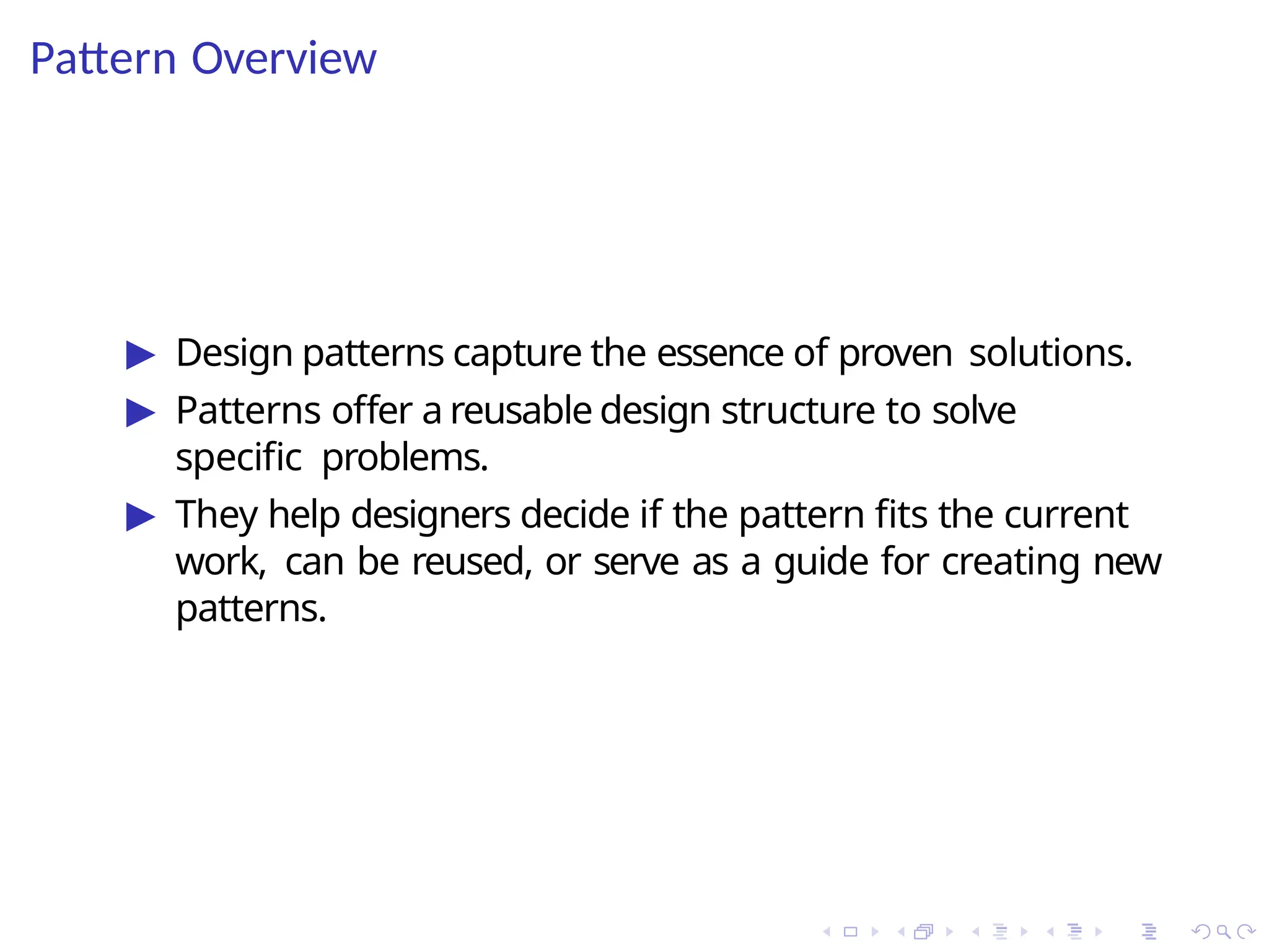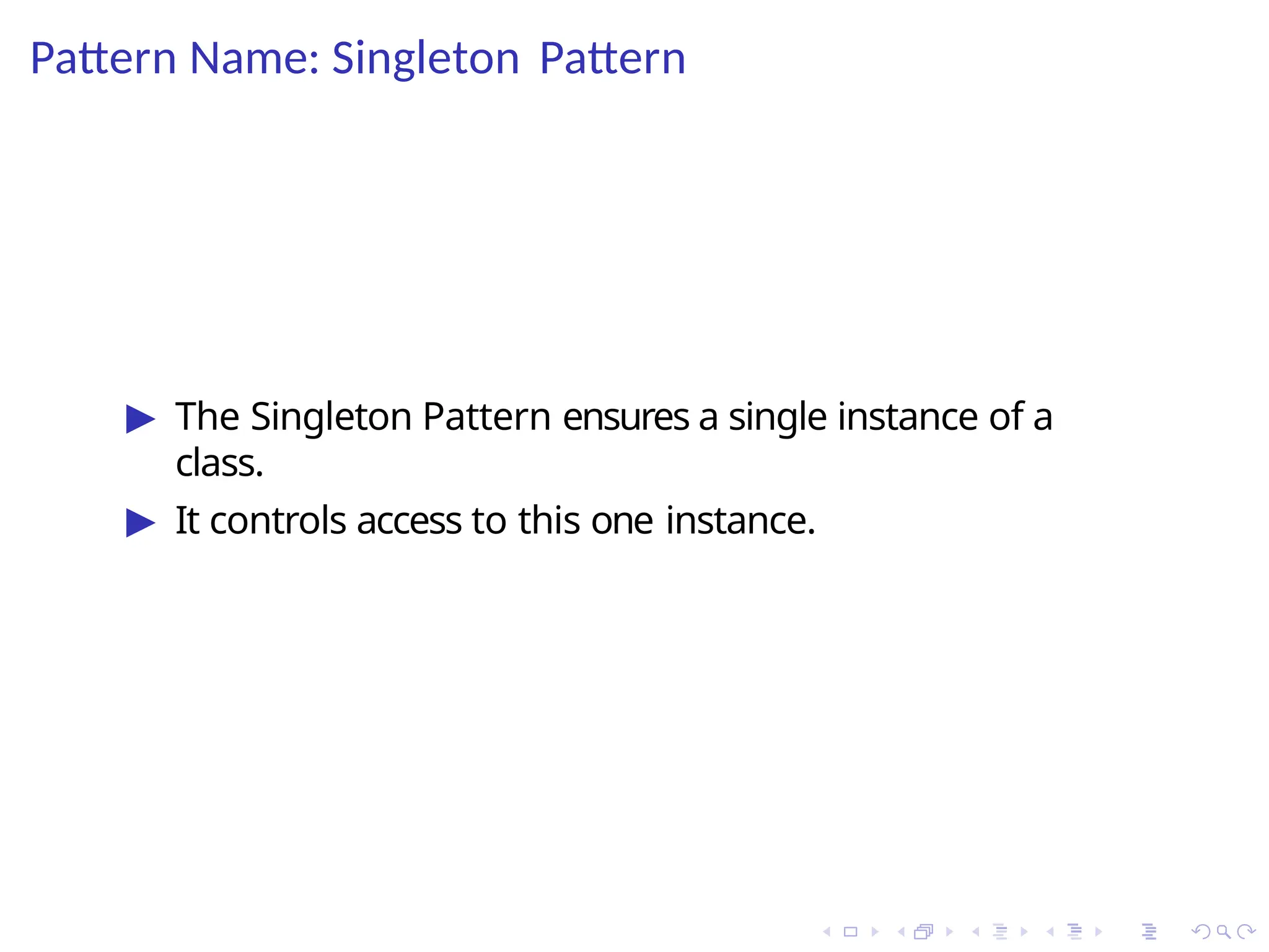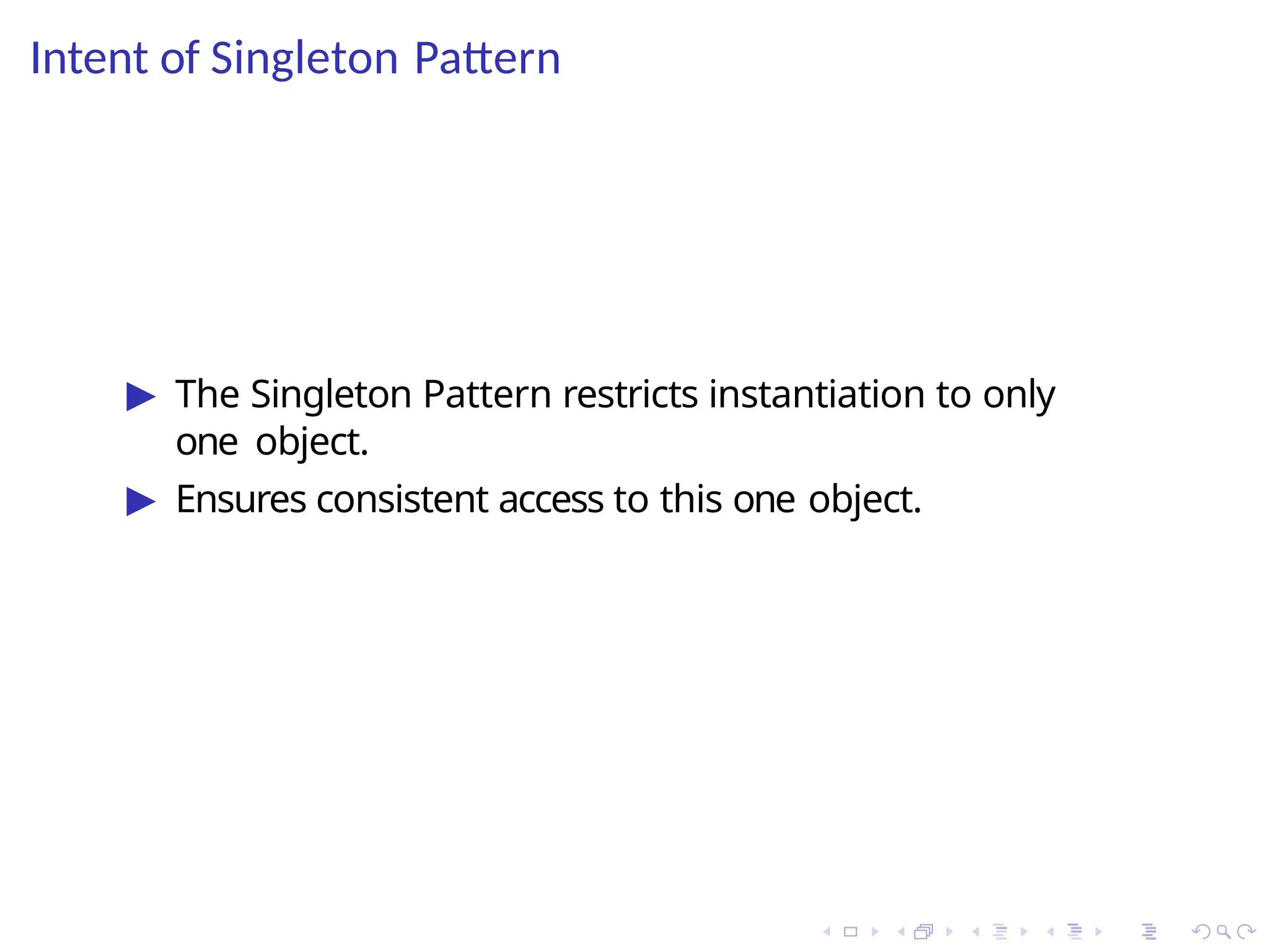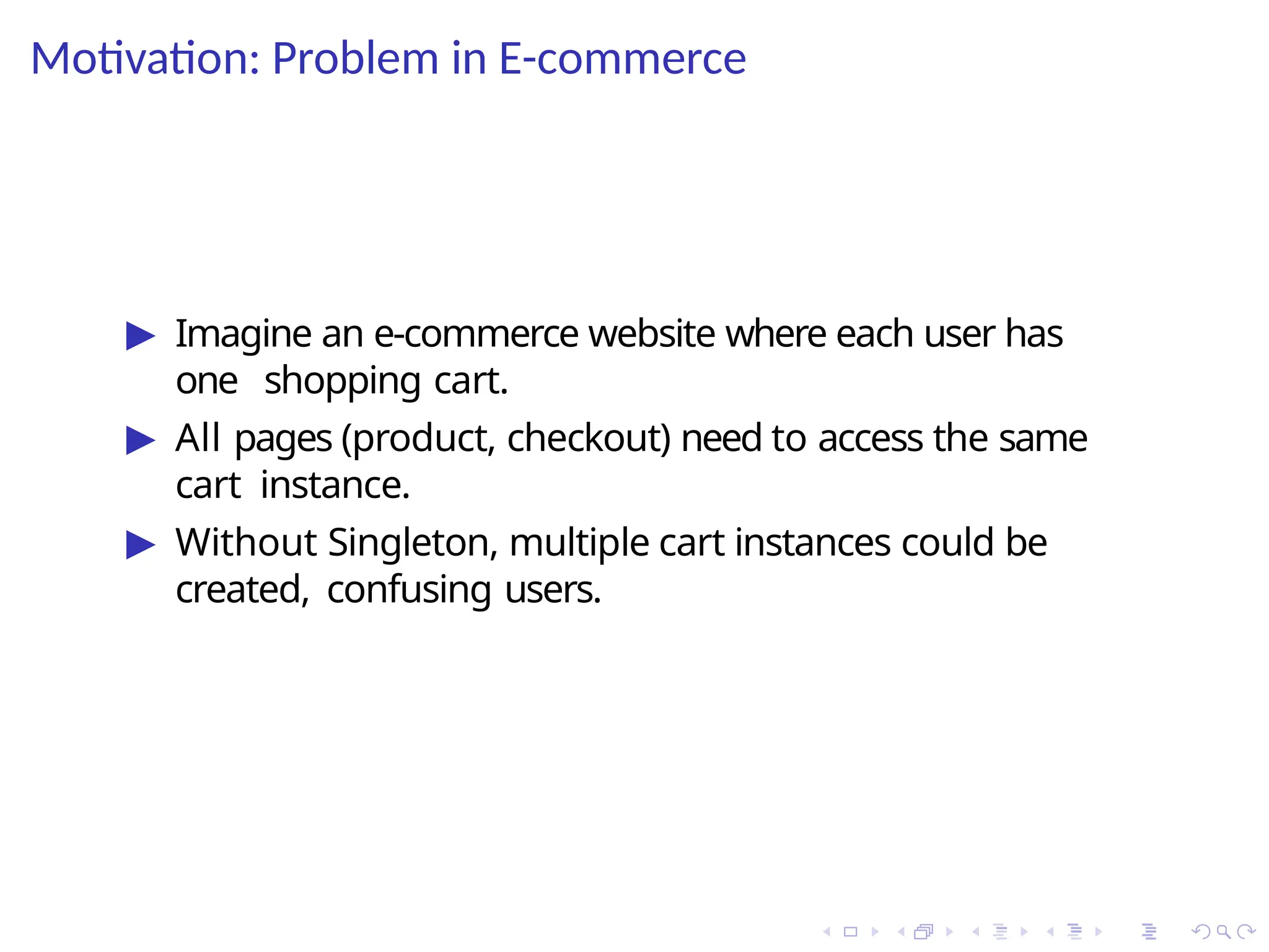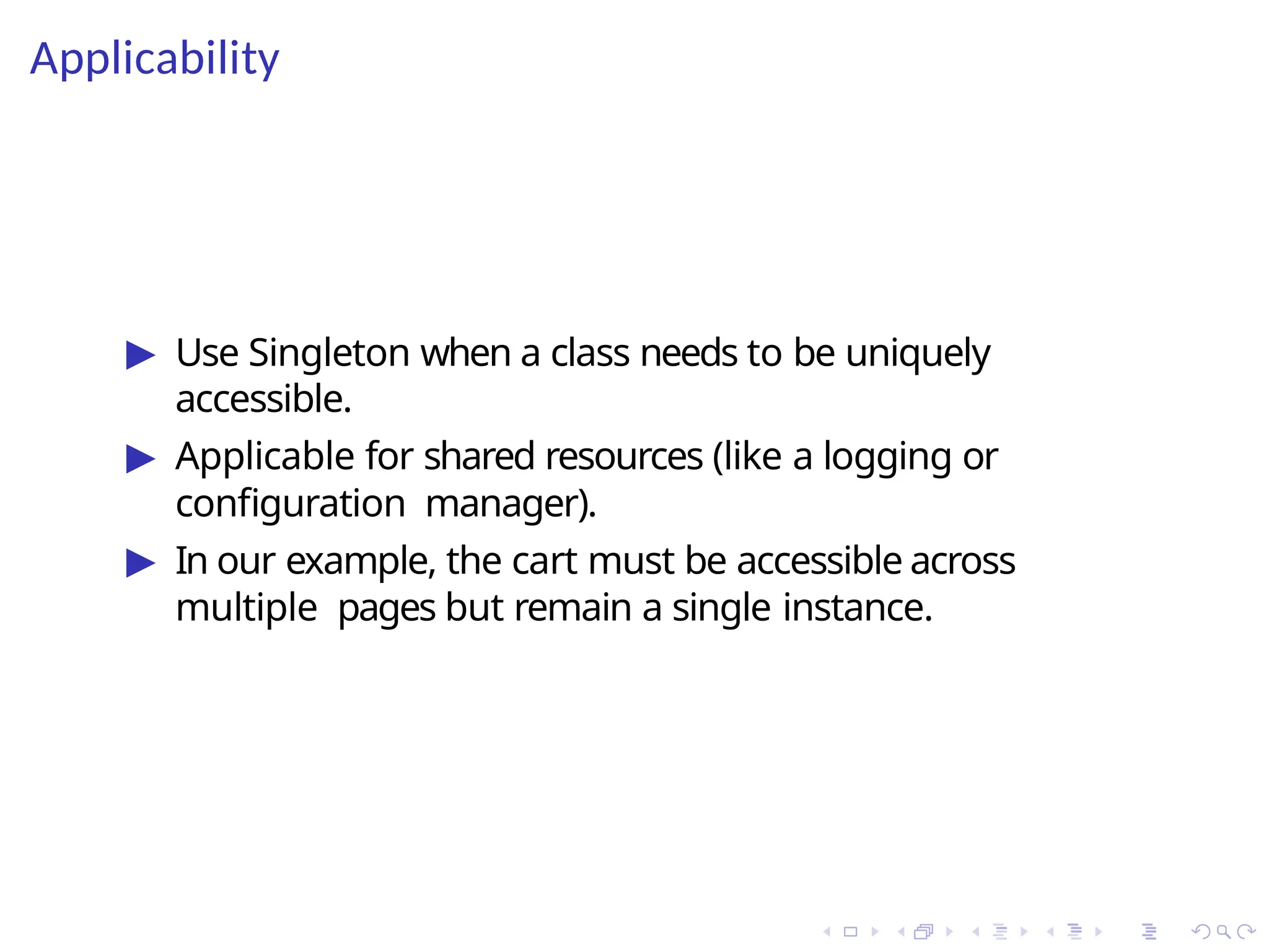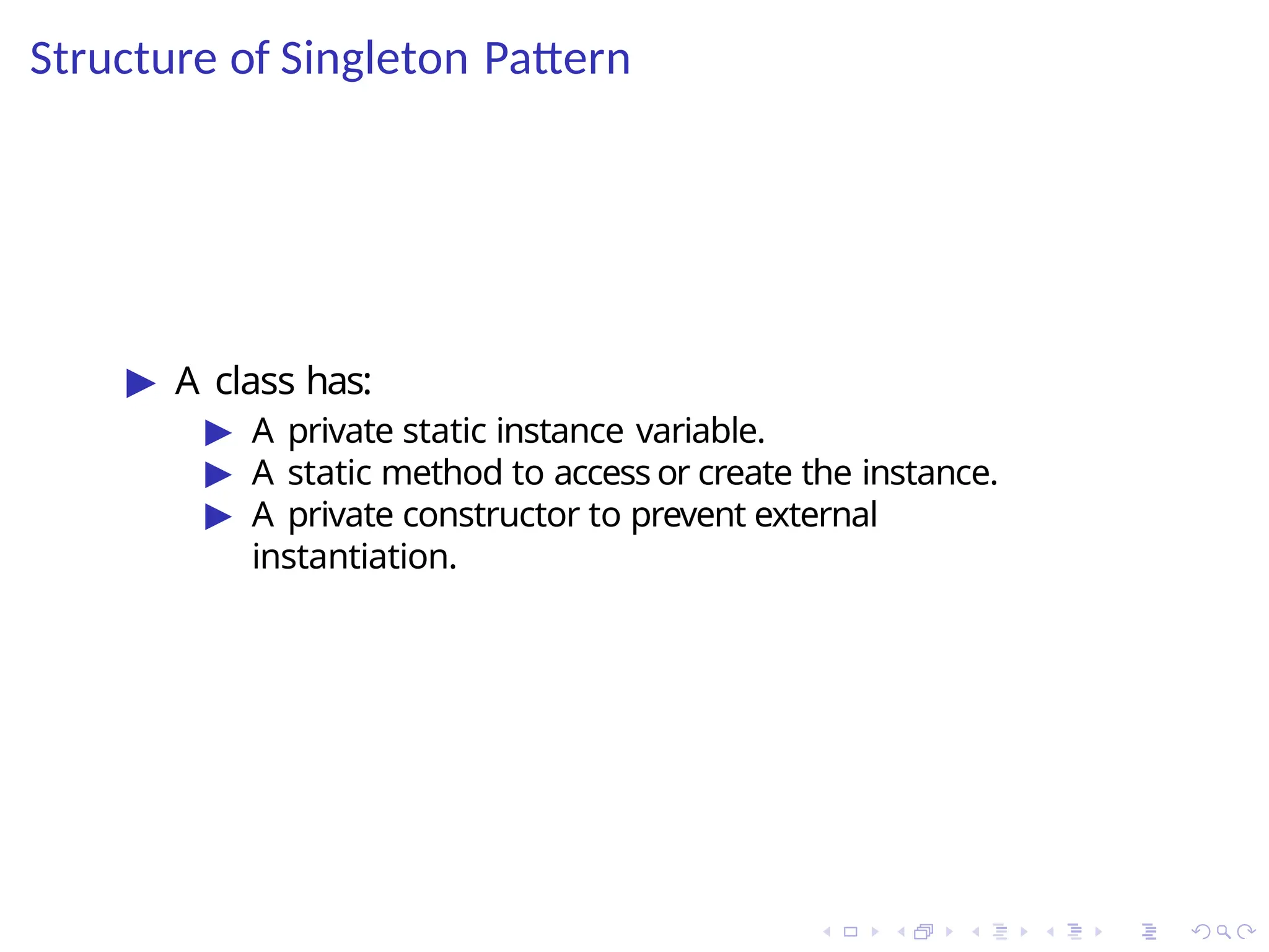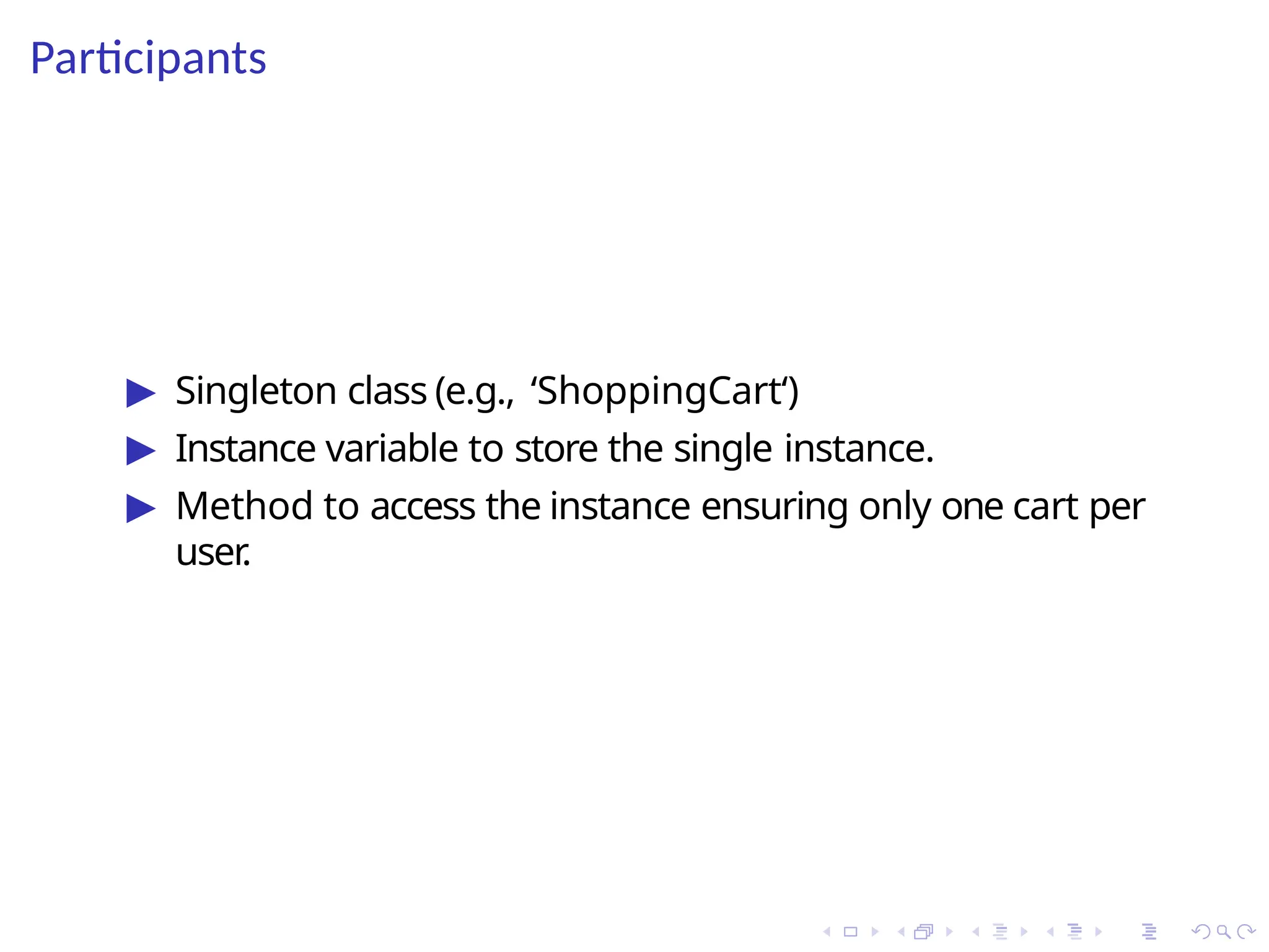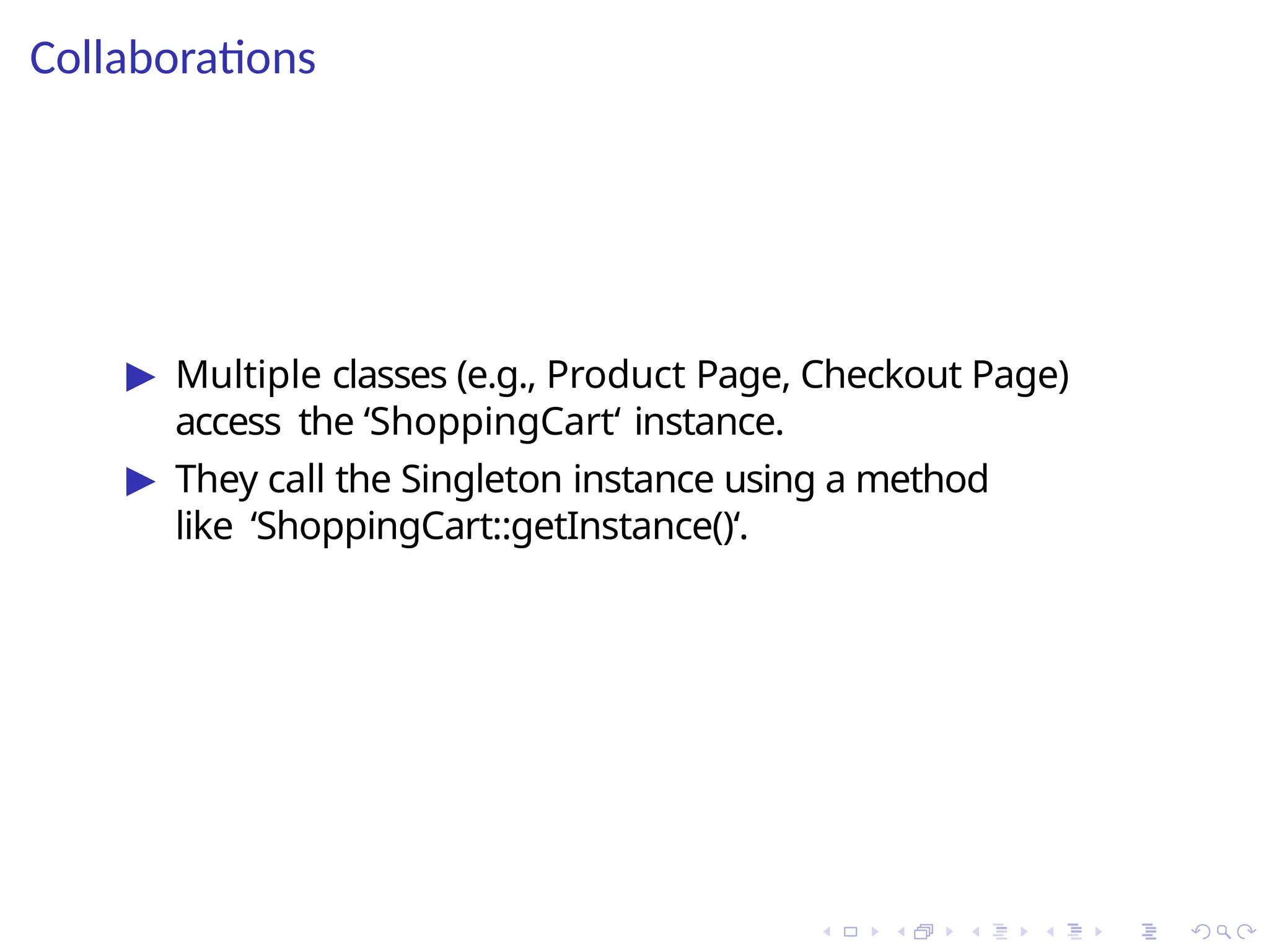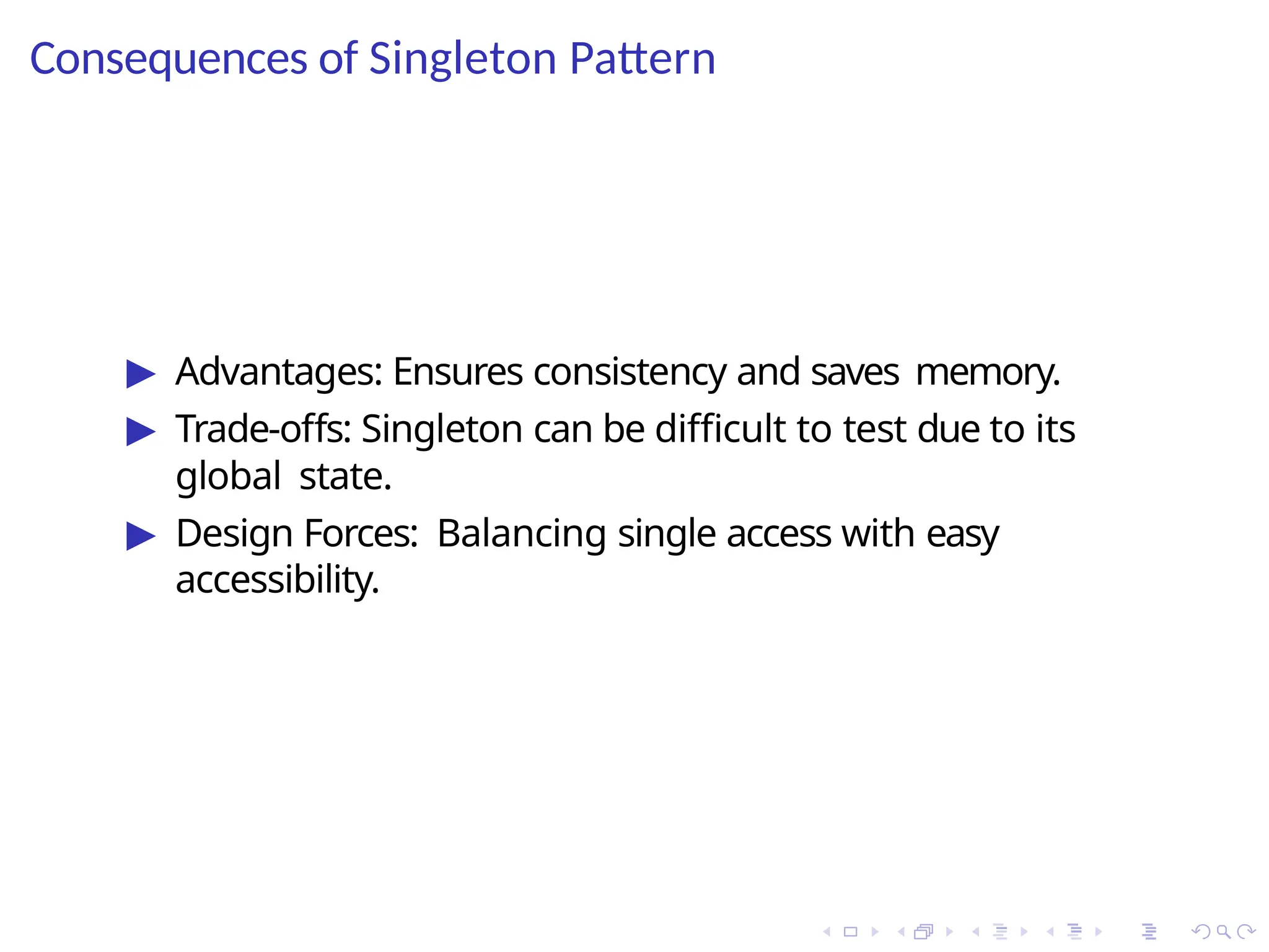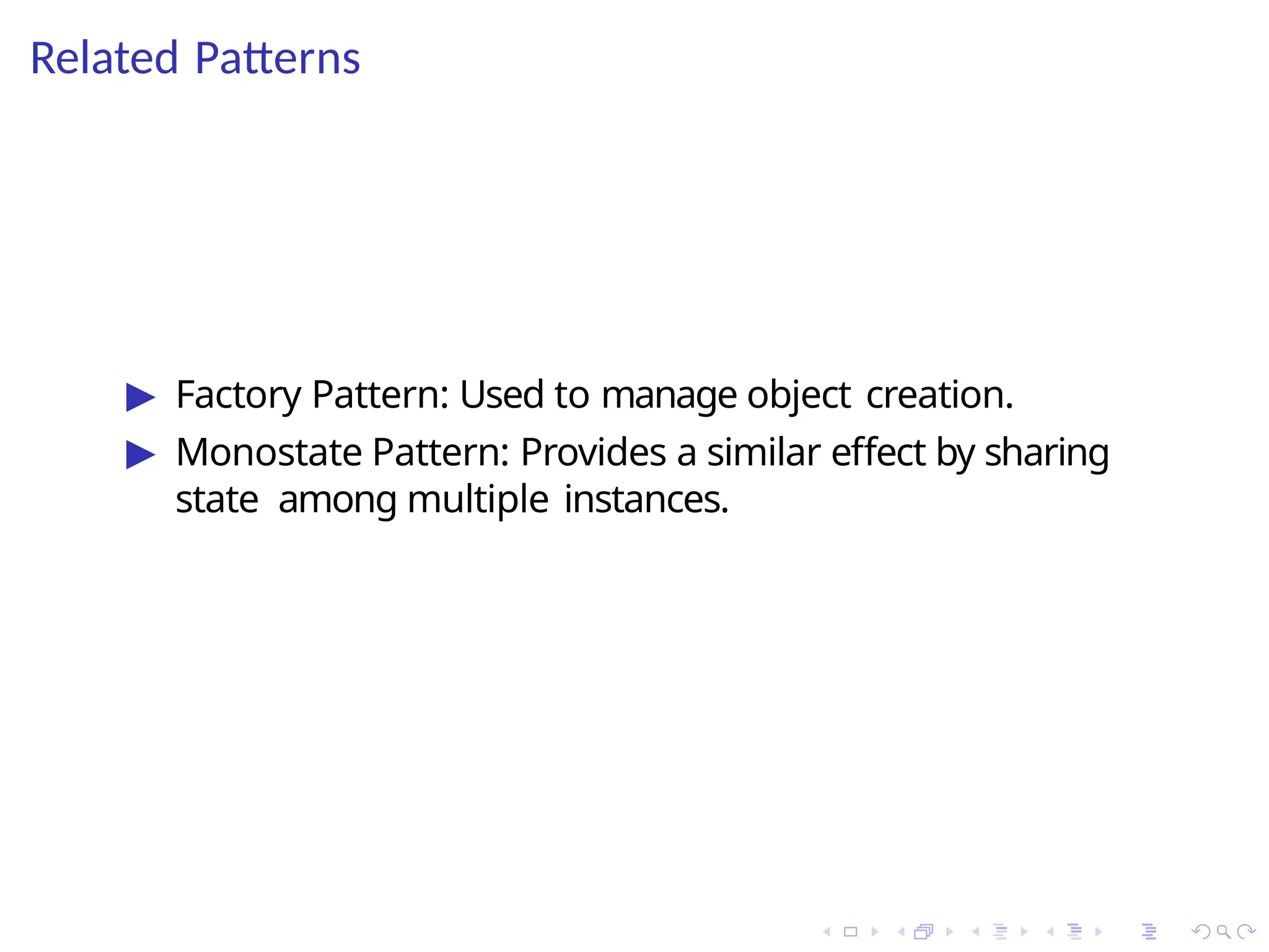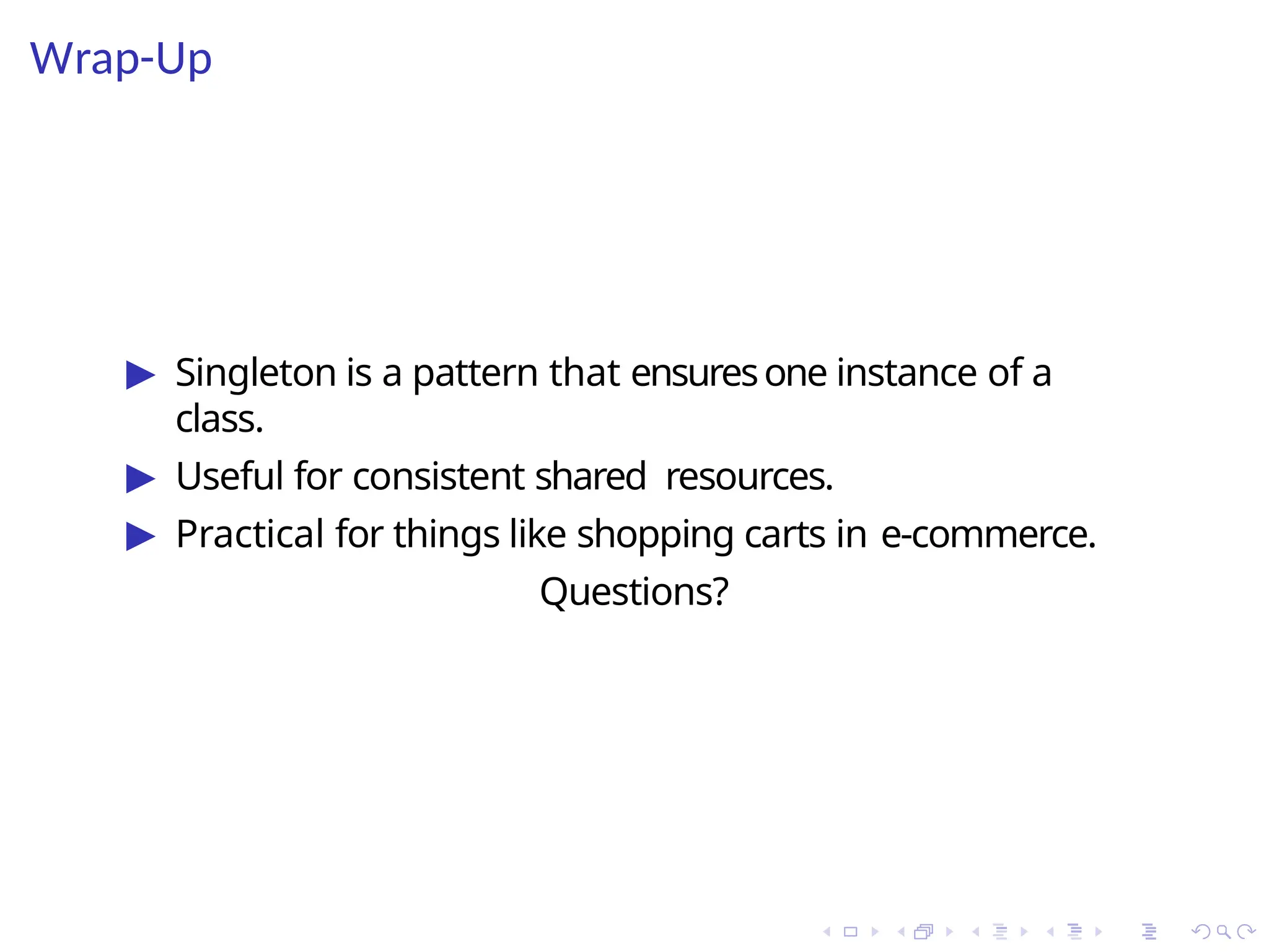The document discusses the singleton pattern in software architecture, which ensures that a class has only one instance and provides a single point of access to that instance. It highlights its applicability in scenarios like e-commerce, where shared resources such as shopping carts must be consistently accessed across different pages. The singleton pattern's structure involves a private static instance variable and a method for instance access, along with its advantages and potential testing challenges.

